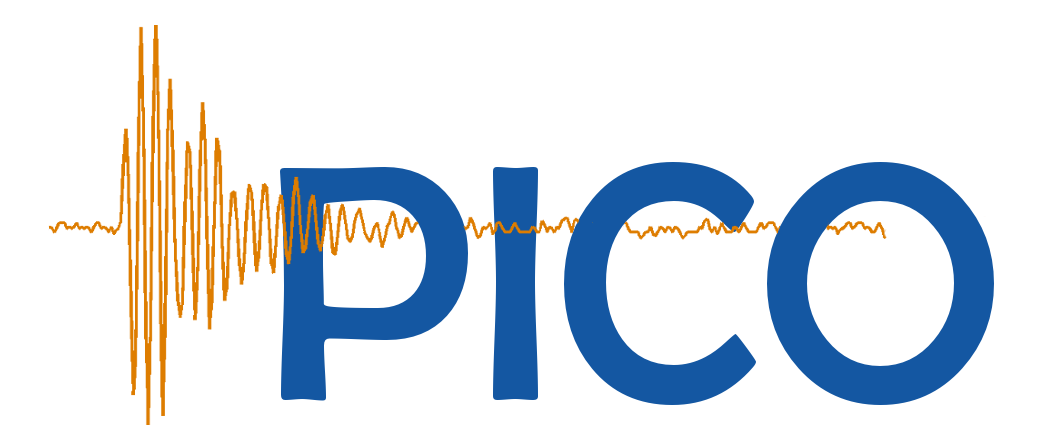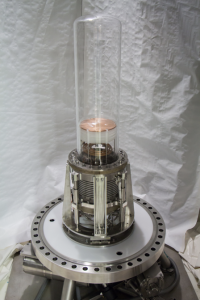
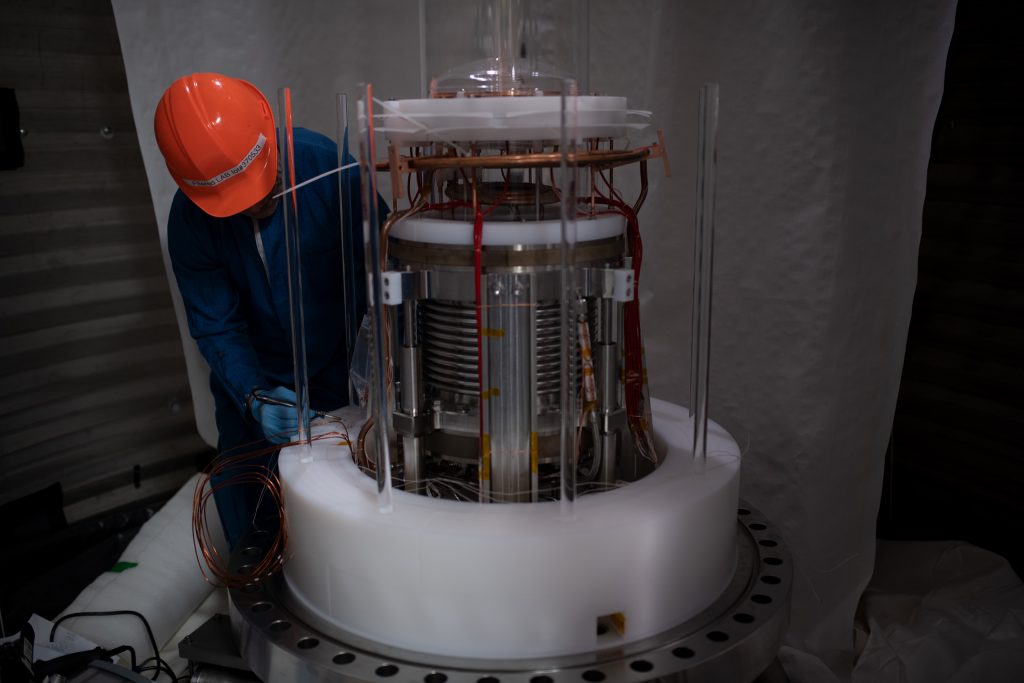
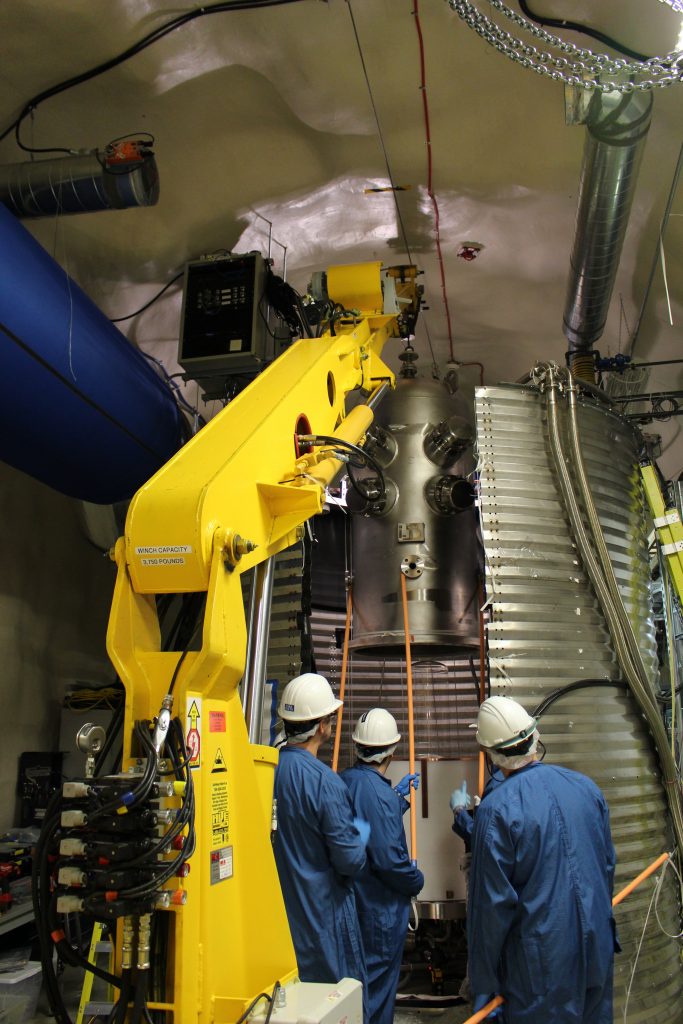
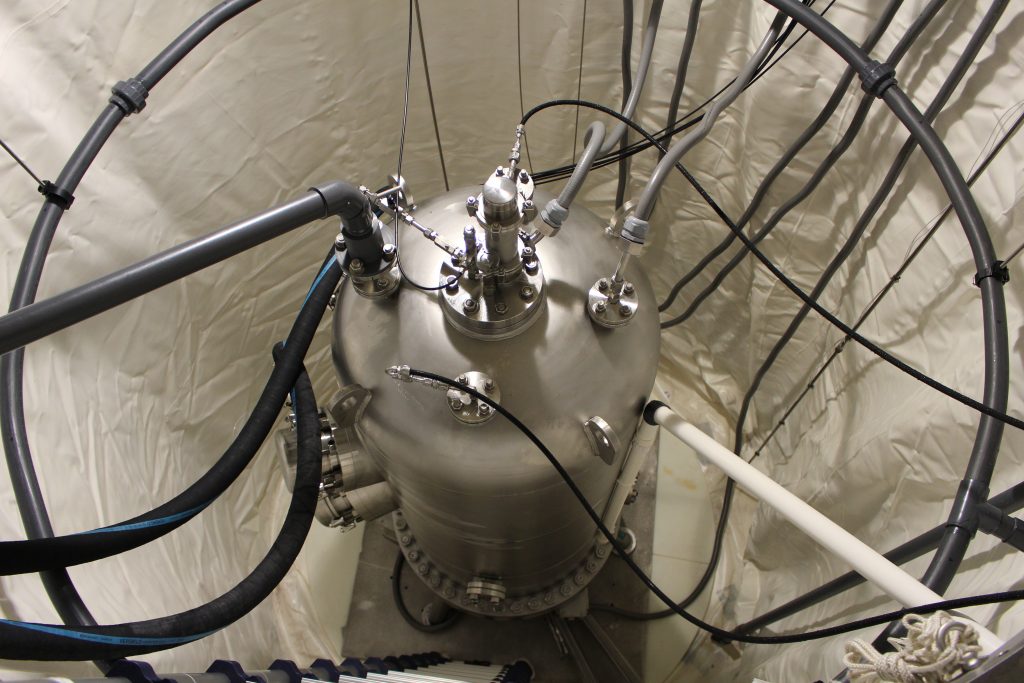
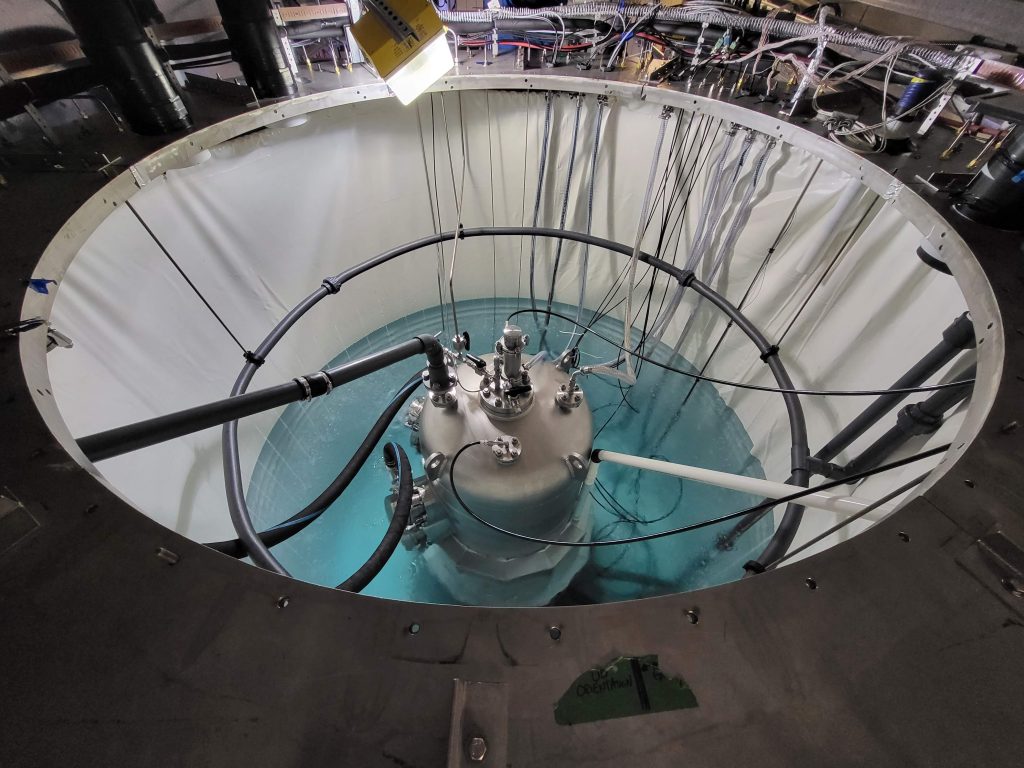
Following the success of the second run of PICO-60, the PICO collaboration re-designed the bubble chamber technology to improve background suppression. The goal was to advance the detector’s sensitivity in the search for dark matter.
The new system involves two, concentric, nested quartz jars (see illustration below), oriented “right-side-up”, when compared to PICO-60. The advantage is the new inner jar eliminates the need for a buffer liquid (water region isolating the stainless-steel components from the target volume), which appeared largely responsible for the backgrounds observed in run 1. The new design also incorporates a newly engineered thermal system, which allows more stringent control over operating conditions that determine the energy threshold of the detector.
PICO-40L: The Design Concept and Implementation
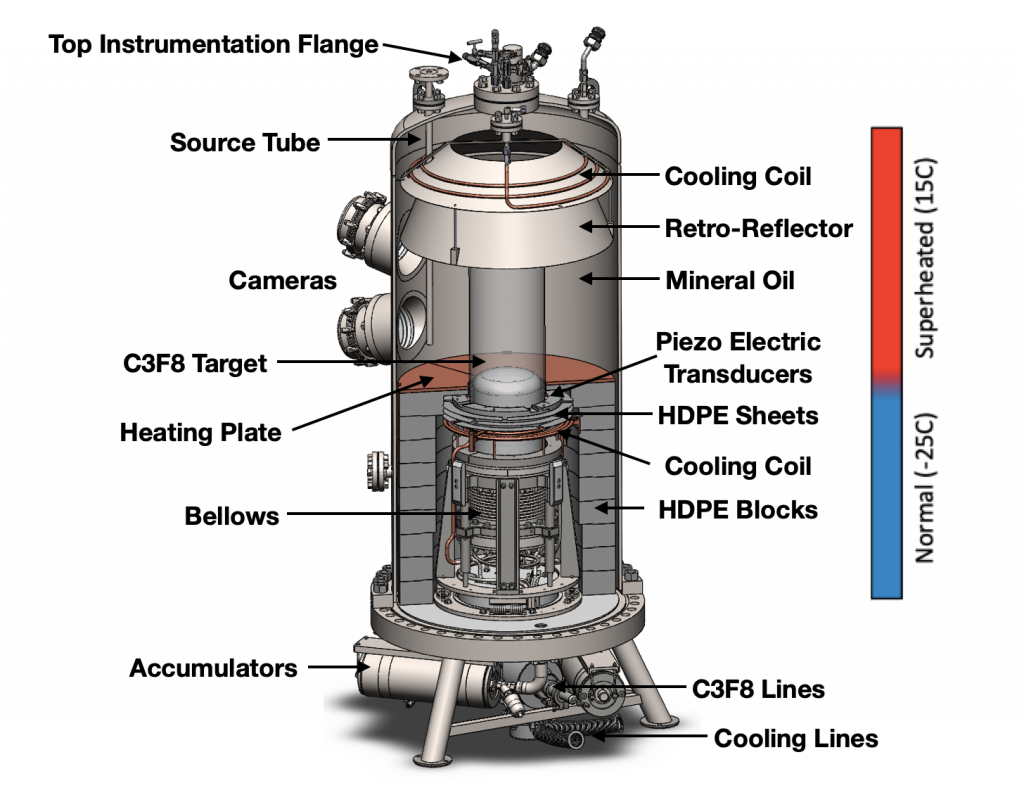
The detector began construction at SNOLAB in 2019 and was finished in 2020. Based on lessons from that first phase, updates were made to the detector in 2021-2022. The next phase of PICO-40L began commissioning in 2023 and operations later that year. Stay tuned for results from the collaboration as we continue to operate and learn from this experiment!
Filling the Bubble Chamber
Mineral oil provides the hydraulic pressure needed to compress (or expand) the space between the two jars. Freon, normally in gas at room temperature, can then be pushed into the jars. The temperature and pressure inside the jars can be controlled and results in liquified freon. It takes a few days to fill the pressure vessel with mineral oil and then the jars with target fluid. The movie below shows our filling process.
Particle Interactions in PICO-40L
An energy deposit within a certain volume, and above a specified energy threshold, is sufficient to cause a bubble to form and expand. The key signatures of a particle interaction in our detector are (a) a visible bubble whose size grows above 1mm and (b) a sound wave in the target fluid that indicates the formation of one or more bubbles. Our instrument literally sees and hears particle interactions.
